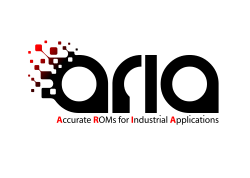The purpose of the secondment (June 2022) is to collaborate with Inria Bordeaux personnel in order to provide research that increment an ongoing project. The project is about model order reduction (MOR). In detail, the purpose of the project is to develop a nonlinear interpolation technique based on mapping of coherent structures by using the optimal transportation.
 During the secondment period, a non-linear interpolation technique was tested based on mapping of coherent structures by optimal transportation. Given a dataset of snapshots (flow field solutions) depending on a set of parameters, the idea is to create a non-linear interpolation between them in order to estimate the solution for intermediate values of the parameters. Optimad’s team studied two different test cases: a two-dimensional transonic flow past a RAE2822 airfoil changing the Mach number and the angle of attack and a two-dimensional backward facing step changing the Reynolds number and the step’s inclination.
During the secondment period, a non-linear interpolation technique was tested based on mapping of coherent structures by optimal transportation. Given a dataset of snapshots (flow field solutions) depending on a set of parameters, the idea is to create a non-linear interpolation between them in order to estimate the solution for intermediate values of the parameters. Optimad’s team studied two different test cases: a two-dimensional transonic flow past a RAE2822 airfoil changing the Mach number and the angle of attack and a two-dimensional backward facing step changing the Reynolds number and the step’s inclination.
Let the flow field solution associated to the parameter : knowing the solutions for two values of the parameter, the goal was to build a non-linear interpolation of them in order to predict the solution for .
The team started with a procedure for a one-dimensional parametric space, based on several steps:
- Coherent structures detection: identification of the markers in the region characterized by coherent structures of the flow (e. g shock waves, vortices) through a specific scalar testing function.
- Gaussian models: suppose the markers are realizations of a multivariate gaussian distribution, we exploited the maximum likelihood estimation to compute mean and variance of the gaussian associated to the coherent structure.
- Optimal transport: we found the displacement between and , the two gaussian distributions of the two known snapshots by using optimal transport solution.
- Elasticity equation: Prolongation of the optimal transport solution in order to have a displacement that is “equal” to the optimal solution in the coherent structure region and satisfies impermeability conditions on the solid walls.
- Mesh Morphing and non-linear interpolation: Use the prolonged displacement to morph the mesh from to and vice versa. Then, a convex displacement interpolant , functions of and is obtaned such that: and with is a nonlinear interpolation between and and can be used to predict the field for .
The procedure was extended for snapshots in multi-dimensional parametric space.



